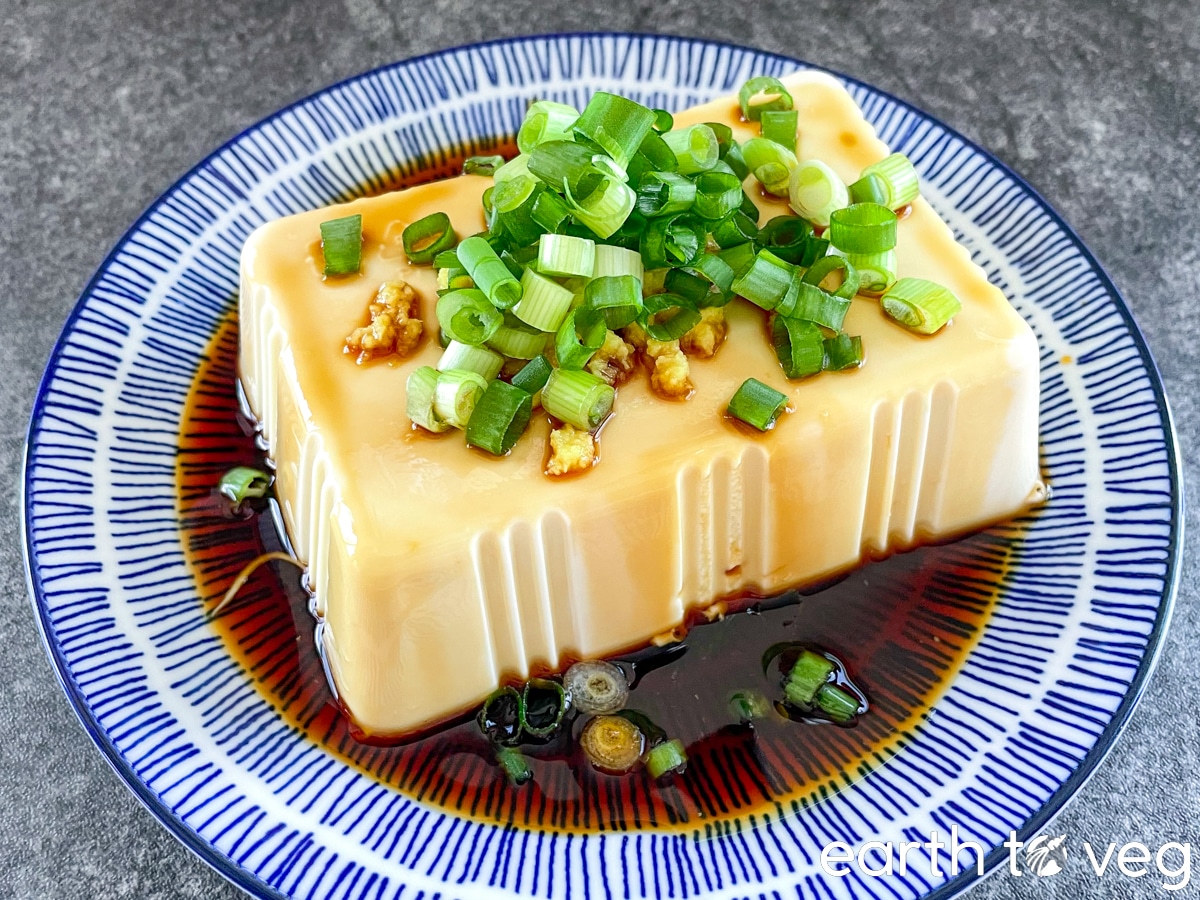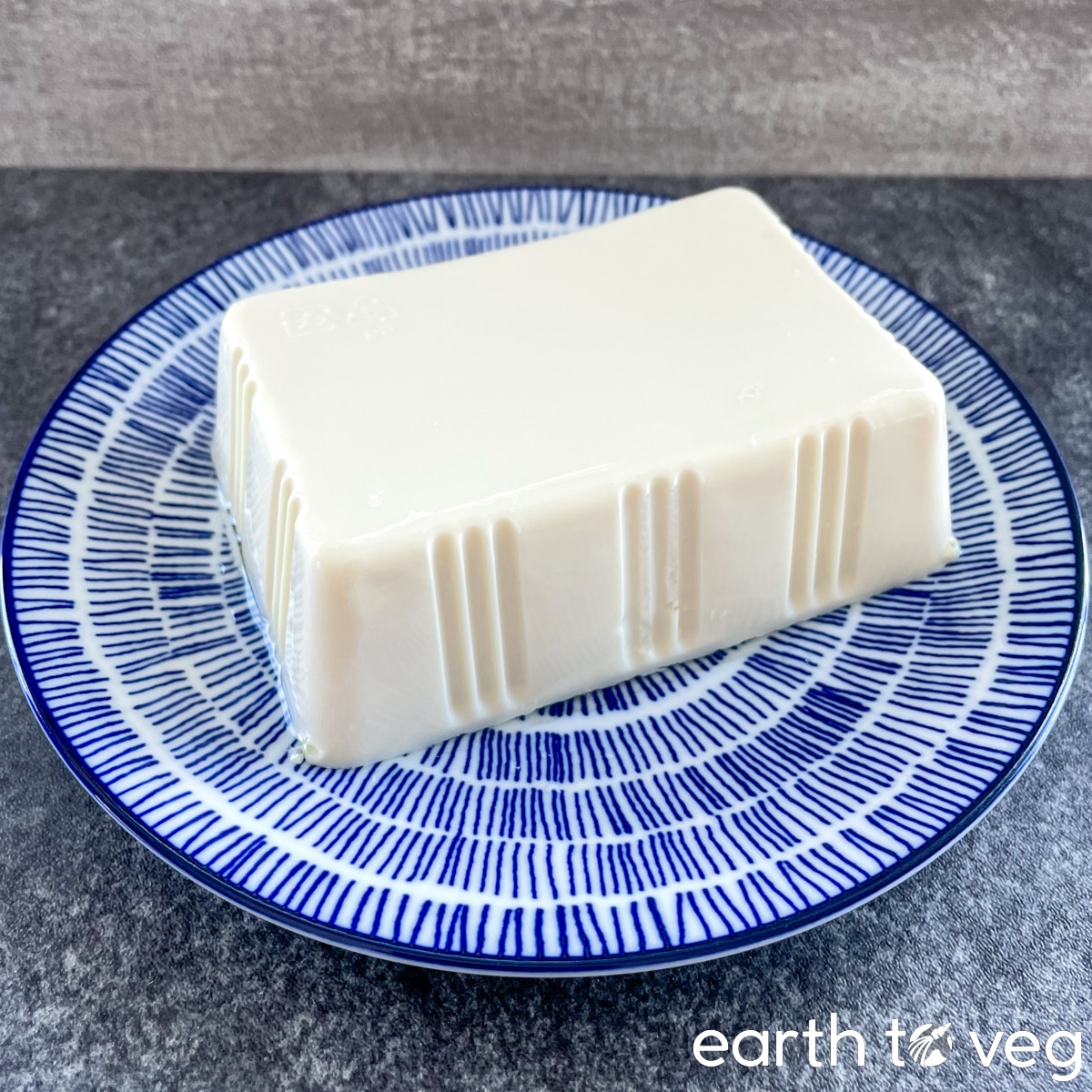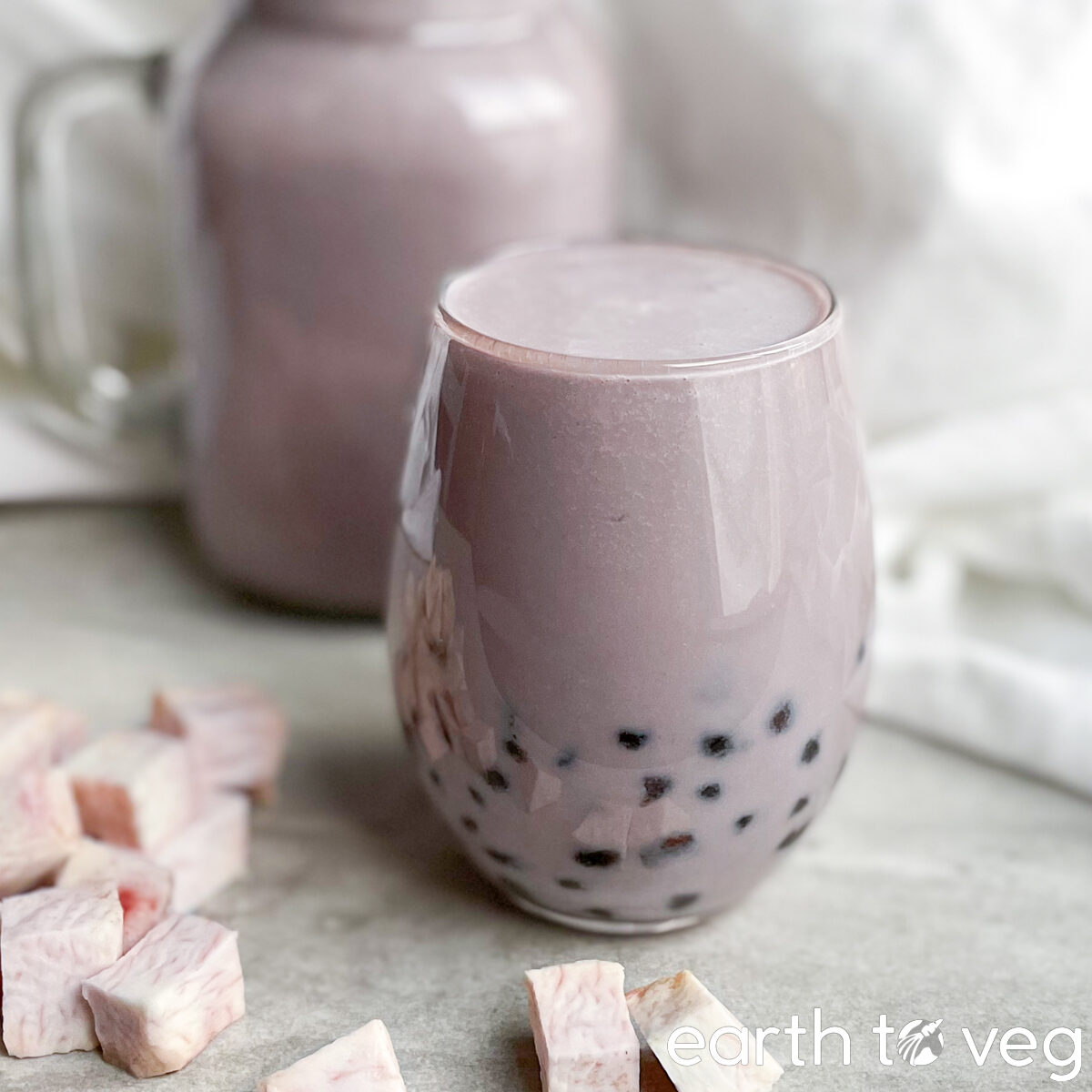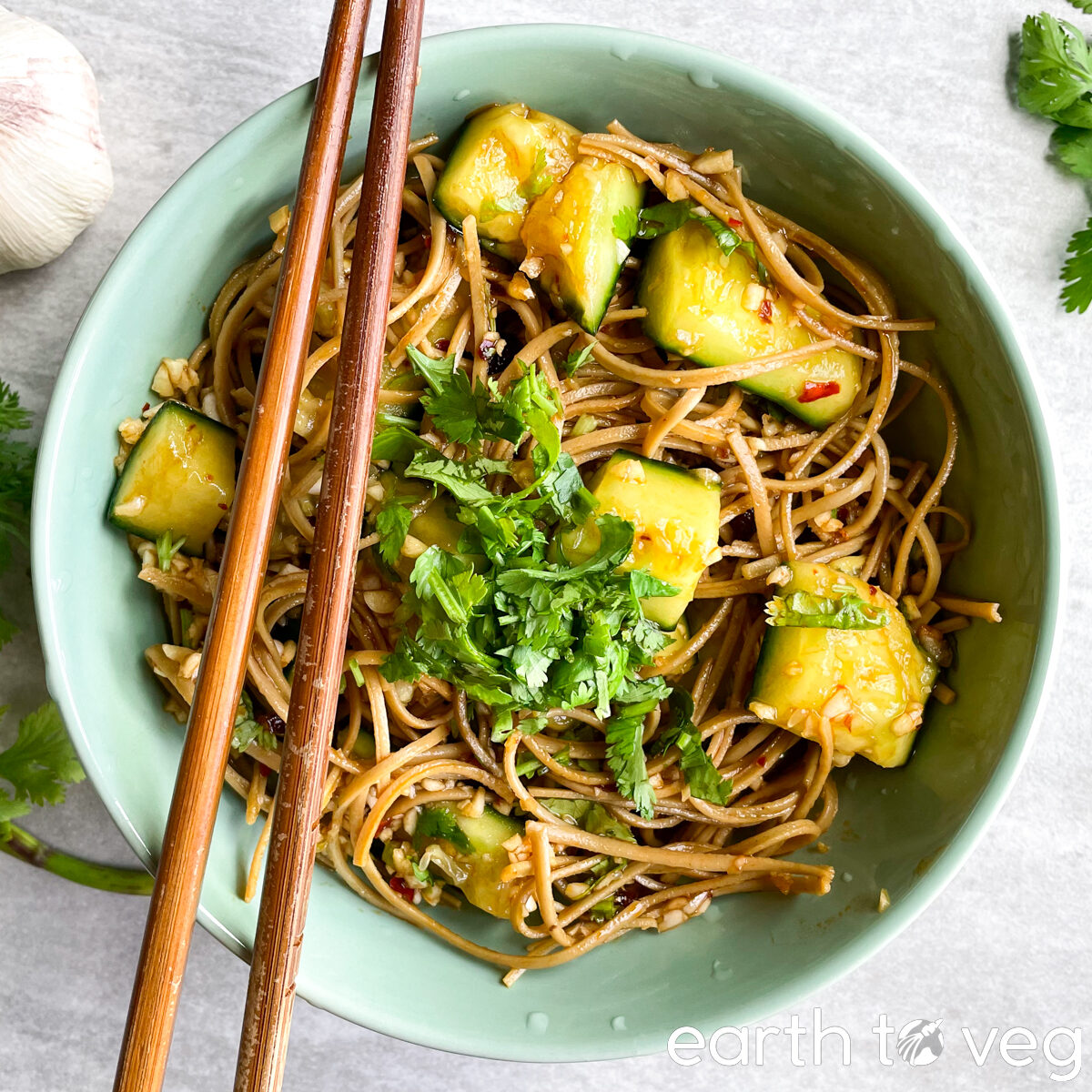Hiyayakko (冷奴) is a Japanese silken tofu appetizer, served chilled and seasoned with a smattering of savoury toppings, like soy sauce, scallions, and ginger. This recipe has a centuries-long history in Japan, dating back to the Edo period in the 1600’s. With endless flavour variations, it’s the ultimate lazy snack.

History & Origins
Hiyayakko is a Japanese recipe that originates from the 17th century in the Edo period. Although its exact origins are shrouded in mystery, it’s obvious that this simple tofu dish was a smash hit. It became so popular that a cookbook published in 1782 declared, “one need not describe hiyayakko since it is so well known.”
This is a dish served cold, with no cooking required and few ingredients. It was perfect for hot Japanese summers when nobody felt like working up a sweat by standing over a stove. (Especially in those days before the advent of air conditioning… shudder.)
Even though it’s simple, don’t make the mistake of thinking it’s boring. Hiyayakko is a beloved dish in Japan to this day, and can be found in restaurants and izakayas all over the country. The cool and creamy texture of the tofu combined with the flavorful toppings creates a delightful contrast.
This time-tested dish has managed to keep up with our busy modern lifestyles, since it only takes a few minutes to prepare. I’ve been struggling through busy season at work for the past few months and I’ve eaten hiyayakko almost every week. Can confirm: still not bored yet! (Part of the reason for that comes from the endless toppings and variations you can try with hiyayakko. Check out the Toppings section below; you never have to repeat the same meal twice.)
If you like hiyayakko, you’re sure to love these other recipes that use silken tofu:
How Did Hiyayakko Get Its Name?
Hiya in Japanese means “cold.” That’s clear enough: this recipe is meant to be served cold!
The second part, yakko, was the name for a type of servant in Edo Japan who accompanied samurai, similar to a squire or a footman in Medieval Europe. They wore clothing with distinctive square patterns on their sleeves—you can see examples in Edo-era art like Yakko Datehei or this yakko wielding a spear. Later, yakko came to describe all things square-shaped. For example, yakko-dōfu means “square tofu.”
So the word hiyayakko was coined, meaning “cold square tofu.”
What You’ll Need
Hiyayakko is very basic at its core, but there are nearly endless possibilities for toppings.

Base Ingredients
There are only two ingredients that are indispensable to every hiyayakko recipe: SILKEN TOFU and SOY SAUCE.
And even the soy sauce can be swapped out for ponzu sauce (a savoury citrus sauce) or mentsuyu (a noodle soup base).
So I guess tofu is really the only essential element. 🤭 With such minimal ingredients, this recipe is naturally gluten-free, vegan, and keto-friendly.
Did you know: Most tofu is safe to eat raw. Unless the packaging explicitly directs you to heat it up, there is no issue with eating uncooked tofu.
Momen vs Kinu
In Japan, tofu is broadly classified as momen (firm) or kinu (soft). Hiyayakko is most often made with kinu tofu, also known as silken tofu, smooth tofu, or soft tofu. The slippery smooth, pudding-like texture of this tofu is a signature of hiyayakko.
However, if you prefer the denser texture of a medium, firm, or extra-firm momen tofu, go ahead! The flavours and toppings of hiyayakko will work with any type of tofu.
Note on Mori-Nu: For most tofu brands, stick to the labels that say “smooth” or silken.” The one exception is Mori-Nu, which is a brand that manufactures all of their tofu using the silken tofu method, so you can use any of the tofu products in their range.
Hiyayakko Toppings
Now here’s the fun part: TOPPINGS. Some of these are traditional, some not. Feel free to try your own topping combinations and be sure to let me know what worked for you and what didn’t!
- Scallions. For me, this is a must. Almost every time I make hiyayakko I will include a diced-up green onion. It just pairs wonderfully with the tofu and soy sauce.
- Grated ginger. If it’s your first time making hiyayakko, I suggest trying the most popular topping combination, which is scallions + ginger. The ginger adds a sharp, refreshing note and it’s especially good in the summer when you’re feeling lazy and tired. It will wake you right up!
- Wasabi. A good alternative to ginger that packs just as much flavour punch but in a totally different direction.
- Shiso leaves. Also known as perilla leaves or sesame leaves (even though it’s a completely different plant from sesame), this intensely flavoured herb tastes to me like a strong minty basil. A single leaf will go a long way; slice it very thin (chiffonade is the fancy term) and sprinkle it over the tofu.
- Natto. A bit of a controversial food, natto is a Japanese fermented soybean dish. Some people (like me) love it for its sliminess, while others hate it for that same exact reason. Eat with hiyayakko for some delicious soybean-on-soybean action!
- Okra. Make sure to boil or steam the okra first, then slice it into coins. (For double the stickiness, pair with natto!)
- Abura-age. This is the Japanese word for fried tofu. Slice it into strips and pile it onto hiyayakko for a filling and crunchy topping.
- Daikon radish. Adds a crisp and refreshing element with a savoury pungency that perfectly complements the chilled tofu.
- Yuzu kosho. Like spicy food? This versatile Japanese condiment made from yuzu and chili paste adds a citrusy heat to hiyayakko.
- Ponzu sauce. A particularly popular alternative to soy sauce in hiyayakko. Made from yuzu, soy sauce, kombu, and other ingredients, its bright and zesty taste complements the mildness of the tofu.
- Kimchi. Top the tofu with a generous pile of kimchi for some sweet-savoury Korean flavour.
- Shredded or julienned carrots. Not too common, but can be found in some Chinese variations of hiyayakko.
- Chili oil or chili crisp. I go through phases of putting Lao Gan Ma on everything I eat, and one time I tried putting it on hiyayakko. Together with some fresh chopped scallions, it’s a life changing experience, seriously.
- Dulse flakes or shredded nori. Traditionally, bonito flakes (made from fish) have been a popular topping for hiyayakko. But for a veggie-friendly version, dulse flakes and shredded nori are both made from seaweed and impart a savoury, fishy flavour without any actual fish.
- Sesame seeds. Sesame seeds are commonly sprinkled over hiyayakko as a topping, providing both visual appeal and a nutty crunch.
- Furikake. Combine the forces of seaweed and sesame seeds together, and add some Homemade Nori Komi Furikake to give your Hiyayakko a great crunchy texture.
- Ground faux meat. Fry up a little veggie ground, like Gardein or Yves, and pile it onto the tofu.
- Cherry tomatoes: In addition to the traditional toppings, one delightful variation of hiyayakko is to incorporate cherry tomatoes into the dish. The juicy cherry tomatoes adds a burst of color, sweetness, and refreshing acidity to hiyayakko.
- Cucumbers. Like tomatoes, cucumbers aren’t the most traditional option, but they’re popular because their crisp watery crunch provides a great contrast to the soft and custardy tofu. A good alternative to the daikon radish topping if you aren’t a fan of strong radish flavour.
- Ume paste. Ume paste is made from umeboshi (pickled Japanese plums), which have a distinctive sour and slightly sweet taste. It’s an acquired taste, but adds a refreshing element to the chilled tofu.
- Oni karashi. Also known as “devil’s mustard,” this Japanese mustard is a hot and spicy condiment that adds a fiery and tangy bite to the dish.
Leave a comment below with what your favourite hiyayakko toppings are.
Step-by-Step Process

Step 1: Open and drain a package of silken or soft tofu. Turn it out gently onto a plate to ensure it doesn’t break apart.

Step 2: Drizzle over with soy sauce.

Step 3: Pile on toppings of your choice. And that’s it. Grab a spoon and enjoy!
Note: To make smaller servings of hiyayakko as a side dish or appetizer, you can slice the tofu into individual-sized portions before adding the toppings.
Recipe FAQs
Hiyayakko, which translates to “chilled tofu” in English, is a traditional Japanese dish that consists of chilled tofu served with various toppings. The dish is simple yet refreshing, making it popular during the hot summer months in Japan. The tofu is usually lightly seasoned with soy sauce, grated ginger, scallions, and sometimes bonito flakes and sesame seeds. Hiyayakko can be enjoyed as an appetizer, a side dish, or even a light main course.
Hiyayakko is served chilled, and here’s how you eat it: Start with tofu that’s cold from the fridge. Place your preferred toppings on the tofu. (The traditional combo is grated ginger, thinly sliced scallions, and soy sauce.) Using a pair of chopsticks or a spoon, gently break off some of the chilled tofu along with the toppings, and dip in soy sauce. Repeat and enjoy until all the tofu is done!!
Hiyayakko is rooted in the traditional Japanese practice of eating tofu in its simplest form, showcasing its natural flavor and texture. Chilled tofu was especially favored during the summer as a cooling dish that wasn’t strenuous to prepare. It became popular during the Edo period (1603–1868), when it got its name. Hiyayakko comes from the word yakko, which were servants who wore distinctive square patterns on their sleeves. Later, yakko came to describe all things square-shaped. Add hiya, meaning “cold,” and you get hiyayakko: cold square tofu.
Hiyayakko can be vegan-friendly. The main ingredient is tofu, which is a staple in plant-based diets. Many of the toppings and seasonings used in hiyayakko are also vegan-friendly. However, watch out for bonito flakes or dashi sauce, as these common toppings are not vegan.
More Asian Summer Recipes
Recipe Card
Did you make this recipe? Please consider leaving a rating below to let me know how you liked it.
You can also take a picture and tag me on Instagram @earthtoveg, I will shout you out in my Stories!

Hiyayakko (Japanese Cold Tofu)
Use Imperial/Metric buttons below to toggle between volume vs weight measurements. I recommend weighing out your ingredients for best results.
Ingredients
- 1 block silken tofu or 1 box any variety of Mori-Nu tofu
- 1 ½ tbsp soy sauce see Note 1
- 1 scallion
- ½ tsp freshly grated ginger
Instructions
- Open up the package of tofu and carefully drain as much water as you can.
- Turn the tofu out into a shallow bowl gently to ensure it doesn’t break apart.
- Pile on the toppings of your choice. That’s it… Grab a spoon and enjoy!
Video
Notes
- Use Kikkoman or another variety of koikuchi shoyu (Japanese dark soy sauce). This type of soy sauce is the best for raw dishes like hiyayakko. Make sure to use Kikkoman Gluten-Free Soy Sauce if you are sensitive to gluten.




This sounds good. I am going to make it.
I hope you enjoy!